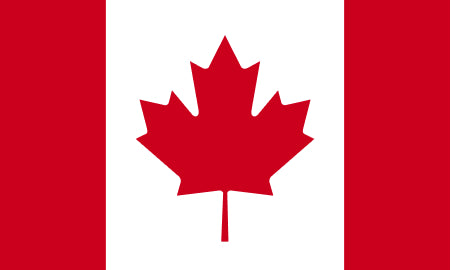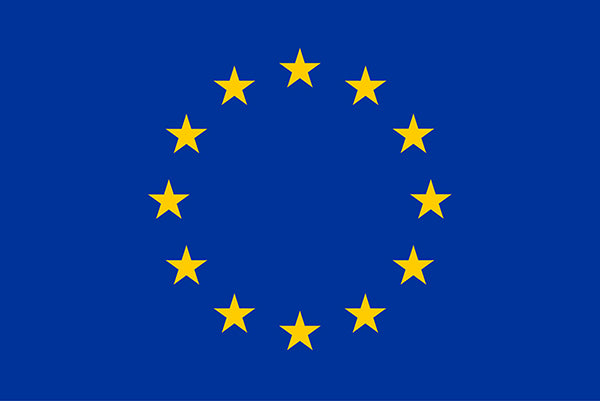Raising a happy, healthy puppy starts with puppy nutrition. Just like all babies, puppies have specific dietary needs that differ from adult dogs. Feeding your puppy just the right amount of food is vital for their development.
“Making sure your puppy gets the proper nutrition they need is a top priority. The amount and manner of feeding a puppy will vary according to age, breed, and activity level,” explains Myriam Doré, an animal health technician.
In this blog, you’ll learn how much to feed a puppy. By understanding your own puppy’s specific needs, you can create a personalized (and ever-changing) feeding plan that promotes proper development.
Understanding Puppy Nutrition
Puppies are constantly growing and developing. Once puppies start walking, they also tend to be very active! Because of this rapid growth, these young dogs need specialized nutrition.
Here’s a breakdown of the nutrients your pup needs to grow properly.
- Protein: The building block for muscles, organs, and a healthy immune system. Puppies need a higher protein content (around 22-32% on a dry matter basis) than adult dogs.
- Fat: Provides energy and essential fatty acids that are required for brain development.
- Carbohydrates: Dogs don’t need as many carbohydrates as other animals. But they still require some for sustained energy.
- Calcium: Calcium is absolutely necessary for growing bones and teeth. But too much calcium can also be a problem so avoid supplements unless advised by your vet.
- Vitamins and Minerals: Your puppy also requires these for overall health and development.
A balanced diet and proper nutrition ensure your puppy’s bones and organs develop as they should. They’re also required to support your dog’s immune system, making puppies more resilient to illnesses.
The right amount of calories keeps your pup energized for play and exploration. Too few calories can lead to impaired growth, but too many calories can lead to health problems down the line, especially in large-breed puppies.

What Type of Food to Feed Puppies
When deciding which food to feed your pup, it’s important to pick a food specifically formulated for puppies that meet AAFCO (Association of American Feed Control Officials) guidelines. Food that’s formulated for adult dogs won’t have all the nutrients necessary for a growing puppy.
Size matters. If you have a large breed puppy, be sure to choose a food formulated for larger dogs. Large breed puppies have different nutritional needs than smaller breed puppies.
There are many types of food you could potentially feed your puppy. Here are the most common options:
- Dry Kibble: Kibble is convenient because it doesn’t need to be stored in a fridge and can be bought in bulk.
- Wet Food: Canned dog food is often considered tastier and is higher in moisture than kibble. Therefore, this diet is a good choice for picky eaters or puppies in need of more hydration. Canned food is typically higher in calories too so extra care needs to be taken to not overfeed.
- Raw Food: It's important to talk to your vet to better understand if a raw food diet is the right diet for your specific pup. It's also the type of dog food that requires more maintenance and freezer/fridge storage so it's important to consider if this works with your lifestyle, too!
Many new dog parents question the difference between “premium” and regular puppy food. The reality is, there isn't always a ton of regulation when it comes to what the word “premium” really means, so it often gets thrown around quite loosely.
How Much to Feed a Puppy: Factors to Consider
While puppy food packaging provides general feeding guidelines, these are just starting points. You’ll likely need to adjust your dog’s portions for their specific needs. Several factors are involved, such as:
- Age: Puppies grow rapidly during specific stages. Newborn puppies rely solely on their mother's milk for complete nutrition. Once weaned (around 4-6 weeks), they require a puppy-specific food formulated for rapid growth. Their growth rate begins to slow eventually, though, and their diet must be re-visited.
- Size and Breed: “Despite requiring more energy daily than smaller dogs, large/giant breed dogs need fewer calories per body weight per day,” notes Myriam.
- Activity Level: Myriam also explains, “Some breeds are much more active, so the dog will need a higher caloric intake.” On the flip side, if your puppy isn’t as active, you may need to lower their portion size to prevent obesity, which can cause many health problems.
Younger puppies need to eat more frequently with smaller portions. Older puppies can transition to fewer meals. Very small puppies (like Chihuahuas) are prone to hypoglycemia, so they are usually fed more often.
How Much to Feed a Puppy Chart
Below is a general chart for how much to feed a puppy by weight (kg). It’s important to keep in mind that this is a very general guideline. You should always check your puppy’s food packaging and/or your vet for more specific suggestions.
|
Weight at Maturity (kg) |
1 ½ to 3 Months |
4 to 5 Months |
6 to 8 Months |
9 to 11 Months |
1 to 2 Years |
|
1.4 - 5.4 |
½ - 1 cups |
⅔ - 1 ⅓ cups |
½ - 1 ⅓ cups |
Transition to adult food |
Transition to adult food |
|
5.5 - 9.1 |
½ - 1 ¼ cups |
1 ⅛ - 2 cups |
¾ - 1 ⅓ cups |
1 - 1 ½ cups |
Transition to adult food |
|
9.2 - 22.7 |
½ - 1 ½ cups |
1 ½ - 2 ¾ cups |
1 ⅛ - 2 ⅓ cups |
2 - 3 cups |
2 - 4 1/4 |
|
22.8 - 34.5 |
⅝ - 2 ⅓ cups |
1 ½ - 4 cups |
1 ½ - 3 ¾ cups |
2 ½ - 4 ¾ cups |
2 ⅝ - 6 1/4 |
|
34.6 - 45.4 |
1 - 2 ⅔ cups |
2 ⅞ - 3 ¾ cups |
2 ⅞ - 6 ⅓ cups |
2 ½ - 4 ¾ cups |
2 ⅝ - 6 1/4 |
|
Over 45.5 |
2 2/4 + |
3 ¾ + |
6 ⅓ + |
7 + |
11 + |
Adjusting Portions as Your Puppy Grows
Your puppy won’t be a tiny cutie pie forever! As your puppy gets older, their growth will slow. As this occurs, they’ll need less and less food. Your dog will also need to switch to an adult dog food when they’re almost fully grown.
Regularly weigh your puppy to track their growth. Your vet will likely weigh your puppy at their check-ups, but you may want to do some weigh-ins at home, too. These checks are the best way to determine if your puppy is on the right track with their growth and nutrition.
You can also keep an eye on your dog’s body score. This method involves feeling for your dog’s ribs and looking at their waistline to determine if they’re underweight, overweight, or a healthy weight.
As a general rule of thumb, you should be able to feel your dog’s ribs easily but not see them. Overfeeding your dog can cause digestive problems, orthopedic problems, and an increased risk of developing diabetes.
Based on your puppy’s weight and body score, you can adjust their food portions as needed. If your puppy seems thin or very overweight, mention this to your vet. Medical conditions can make a puppy too thin or too overweight, and food changes may not be enough to correct these problems.
Transitioning to Adult Food
The timing for switching to adult food varies depending on your puppy’s breed. Generally, small breeds transition around 7 to 10 months. Larger breeds may need to stay on their puppy formula until 18 to 24 months, though.
It's best to consult your vet for specific advice on when to transition your dog to adult dog food. According to Myriam, the transition to adult food should be gradual over a 7 to 10-day period. Start by slowly mixing adult food into puppy food until your dog has completely transitioned to the adult formula.
If your puppy experiences stomach upset, slow the process down and add more puppy food. Some dogs are fine with food changes, while others require extra care. Watch for how often your dog poops a day, as this can indicate if they’re adapting to their new food (or not).

Common Feeding Mistakes to Avoid
Between mastering puppy playtime and those inevitable potty accidents, figuring out how much to feed your dog can feel overwhelming. Fear not! We’re here to help. Here are some of the most common feeding faux pas:
-
Treats & Table Scraps
We all want our puppies to know that they’re loved. But you should try to avoid only expressing this with food. Resist the urge to turn mealtime into a buffet! Overfeeding can cause weight gain, joint problems, and even picky eating down the line.
Remember, table scraps are treats that add extra calories without necessarily giving your dog the nutrients they need.
Use small, healthy treats for training and praise, and remember to factor those extra calories into their daily food allowance.
-
Free-Feeding
Free-feeding, where your pup has constant access to a full food bowl, may seem convenient, but it often backfires. Puppies (and many adult dogs, too) are notorious for overindulging. This feeding method can lead to weight gain and make it difficult to monitor their food intake.
Instead, it’s best to stick to a feeding schedule with measured portions.
Check out this collection of highly engaging dog toys that can help keep your puppy entertained for hours. Perfect for those playful breaks between meal times.
Shop Dog Toys
-
Blindly Following the Bag
While the feeding guide on your puppy food bag is a helpful starting point, it's not a universal truth. Several factors like breed, activity level, and individual growth can affect how much your dog really needs to eat. Don’t be afraid to adjust portions based on your puppy’s weight and body conditions. You know your pup.

What We've Learned...
Responsible feeding is a journey, not a destination. As your puppy grows, their needs will change. You may run into some hiccups you didn’t expect! When in doubt, consult your veterinarian as needed.
For more information on caring for your new puppy, check out our puppy essentials guide.








